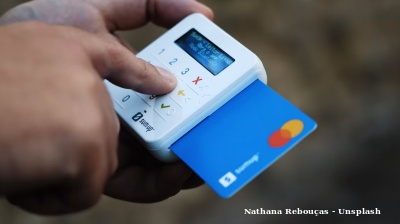Indian Ambassador to Russia Vinay Kumar has expressed optimism about Indian financial institutions adopting Moscow’s Mir payments system and Russian banks adopting New Delhi’s RuPay payments system, in an interview with International Affairs magazine cited by TASS.
Purportedly, diplomatic and commercial discussions are underway, with the stated objective of enabling seamless transactions for Russian visitors in India and vice versa. Yet, while official rhetoric highlights positive momentum, the reality of integrating Mir into India’s financial system remains uncertain amid geopolitical and regulatory complexities.
What are Mir and RuPay?
The Mir card payments system was introduced in 2015 as Russia’s alternative to analogue Western payment systems and clearing houses such as Visa and Mastercard. Most major clearing houses and payment platforms who were already mulling their exit since 2014, suspended operations in the Russian market following sanctions being imposed on the country for its 2022 full scale invasion of Ukraine.
However, Moscow has found it hard to expand Mir’s adoption beyond its own borders with the majority of users being domestic banks and their customer base - in effect failing to become an effective tool for Russia to circumvent Western sanctions.
Similarly, India also rolled out its own homegrown government backed digital card payments system RuPay in 2012, although it was inspired by a desire for developing internationally competitive indigenous financial technologies rather than as a measure to circumvent international sanctions.
While Ambassador Kumar has revealed that discussions on Mir-RuPay interoperability have happened at forums such as the India-Russia Intergovernmental Commission for Trade, Economic, Scientific & Cultural Cooperation (IRIGC-TEC), few concrete details have emerged. The paucity of information likely signals both the sensitivity of the topic and a lack of decisiveness by both New Delhi and Moscow.
Western sanctions and compliance risks
One of the largest impediments to Mir’s international expansion is the risk of secondary sanctions. Several international groupings such as the Group of Seven(G7) including nations such as the US, UK, Japan and several European Union members have imposed stringent restrictions on financial institutions that facilitate transactions with Russian entities, particularly those tied to sanctioned banks.
Any Indian financial institution integrating Mir would have to navigate these legal and diplomatic minefields carefully. Several banks in Turkey, which had initially adopted Mir, suspended their cooperation in 2022 after facing pressure from the US Treasury’s Office of Foreign Assets Control (OFAC). India, a major player in the global financial system, is unlikely to jeopardise its access to Western markets or the US dollar-dominated global transaction network by fully embracing a sanctioned payment system.
Technical and commercial barriers
Even if geopolitical constraints were not a factor, technical and commercial barriers could delay or limit Mir’s adoption in India. Payment system integration requires large scale infrastructure adjustments, individual agreements between financial institutions, and regulatory approvals from India’s central bank - the Reserve Bank of India(RBI).
For RuPay and Mir to achieve technical interoperability, compliance with international security standards, including anti-money laundering (AML) and Know Your Customer (KYC) regulations, would also be necessary. These discussions, though likely to be ongoing, have yet to yield any publicly known framework. Additionally, commercial incentives for Indian banks to support Mir transactions remain unclear.
With limited Russian tourism to India compared to other international arrivals, financial institutions may not see substantial revenue potential in adopting the system, particularly given the risks involved.
India’s strategic balancing act
India has taken a measured approach to its financial engagement with Russia. While trade has surged, primarily due to discounted Russian crude oil purchases, New Delhi has refrained from fully aligning with Moscow’s alternative financial infrastructure. India declined to adopt Russia’s SPFS (System for Transfer of Financial Messages), Moscow’s SWIFT alternative, and instead opted for a rupee-based trade settlement mechanism.
Cautious optimism or diplomatic gesture?
While political rhetoric suggests progress on Mir’s acceptance in India, practical implementation remains doubtful in the near term. The risk of Western sanctions, the technical complexity of payment system integration, and India’s strategic caution in financial dealings with Russia all contribute to uncertainty. Unless these structural issues are addressed, the ambassador’s comments may be more reflective of diplomatic optimism than an imminent financial breakthrough. For now, Mir’s future in India remains an open question—more a topic of negotiation than a reality on the ground.
News

Scores dead, helicopter crashes as typhoon Kalmaegi hits Philippines
Typhoon Kalmaegi, one of the strongest storms to hit the Philippines this year, has claimed at least 46 lives and forced hundreds of thousands to flee their homes.

Foreign companies pay Russia $60bn in taxes since Ukraine invasion
Foreign companies in Russia paid at least $20bn in taxes in 2024 alone, and cumulative tax payments since early 2022 exceed $60bn.

New members expected to join EU by 2030 as enlargement momentum builds
Top European Commission officials say admitting new member states to the European Union by 2030 is now a “realistic goal”.

Russia floats missile supplies to Maduro as US pressure mounts
A prominent Russian lawmaker has suggested that Moscow could supply Venezuela with advanced weapons systems, including the new Oreshnik ballistic missile, as Caracas desperately seeks military assistance amid the escalating US military build-up.




